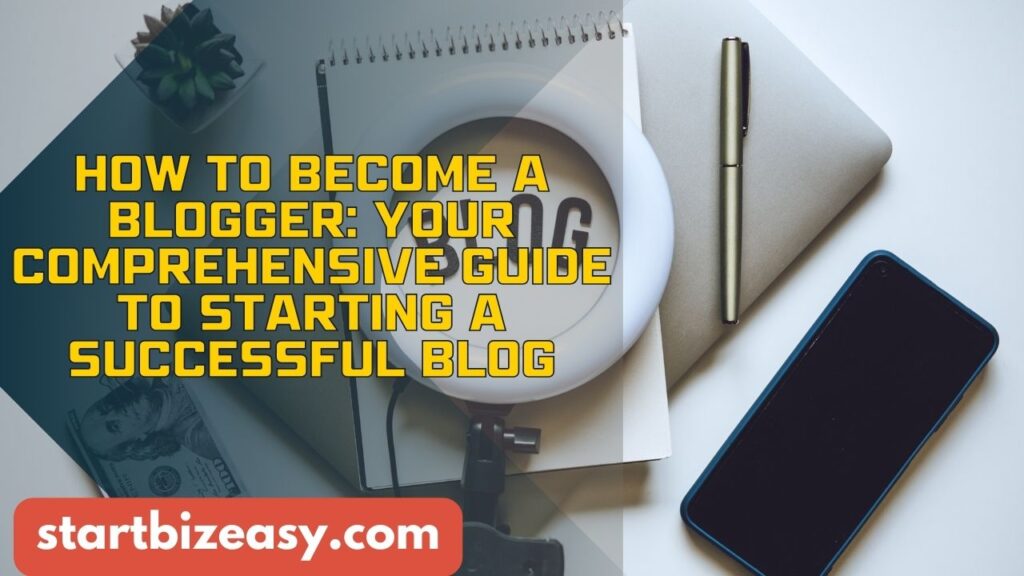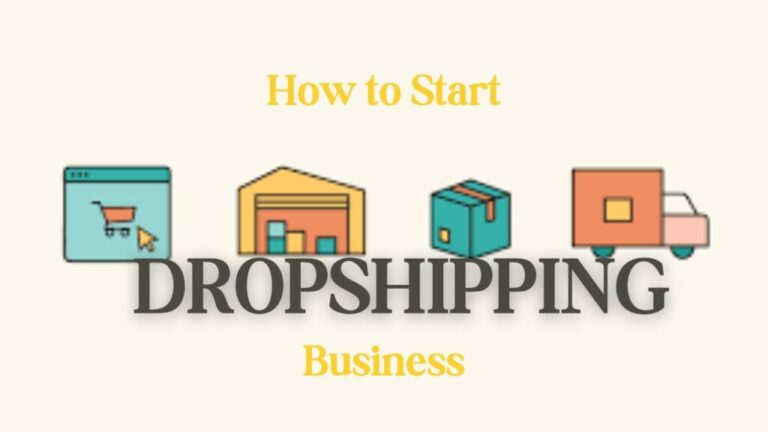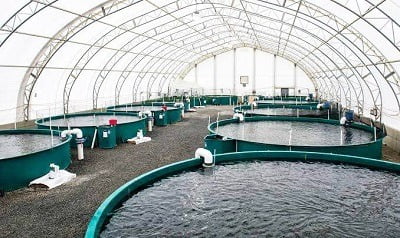
Becoming a blogger involves creating and regularly updating a blog, which is a website or platform where you share your thoughts, experiences, expertise, or interests with an audience. It typically involves writing articles, posting photos or videos, and engaging with readers through comments and social media.
To become a successful blogger, you need to choose a niche or topic you’re passionate about, create quality content, promote your blog through various channels, and build a community of loyal followers.
But starting a blog can feel like stepping into a maze. There are so many things to figure out, like what to write about, how to attract readers, and which platform to use. Don’t worry, though! This guide will help you unlock the secrets to becoming a successful blogger.
Let’s dive into the basics together. We’ll talk about finding your niche (that’s what you love to write about), developing your writing style, and using cool tools to make your blog awesome. Whether you’re a pro writer looking for a new adventure or a beginner eager to get started, get ready to explore the exciting world of blogging with confidence!
Here are the steps on how to become a blogger:
Table of Contents
1. Choose Your Niche:
Choosing your niche is the foundational step in starting a blog. It involves selecting a specific topic or subject area that you’re either passionate about or have expertise in. Your niche could encompass a wide range of interests, such as travel, food, technology, personal development, fashion, fitness, parenting, or even niche hobbies like urban gardening or vintage fashion.
Identifying your niche serves several purposes:
- Focus: By honing in on a particular topic, you can narrow down the scope of your content. This focus allows you to delve deeper into the subject matter, providing more valuable and targeted information to your audience.
- Expertise: Choosing a niche that aligns with your interests or expertise enables you to leverage your existing knowledge and passion. This not only makes the content creation process more enjoyable but also enhances the quality and credibility of your blog.
- Audience Targeting: A well-defined niche helps you attract a specific audience that shares your interests or needs. By catering to a niche audience, you can create content that resonates deeply with them, leading to higher engagement and loyalty.
- Competitive Advantage: In a crowded online space, having a niche allows you to differentiate yourself from the competition. Instead of trying to appeal to a broad audience, you can carve out a unique position within your niche, making it easier to stand out and establish yourself as an authority.
When choosing your niche, consider factors such as your personal interests, expertise, audience demand (Potential Traffic), and potential for monetization. Conduct research to assess the popularity and competitiveness of different niches, and don’t be afraid to niche down if you find a specific subtopic within your broader interest area.
Below are examples of Niches with high traffic with their estimated keyword difficulty:
| Niche | Global Search Volume | Keyword Difficulty |
|---|---|---|
| How to | 150,000,000+ | Easy |
| DIY | 75,000,000+ | Easy |
| Tips and tricks | 50,000,000+ | Easy |
| Recipes | 40,000,000+ | Easy |
| Product reviews | 30,000,000+ | Medium |
| Travel tips | 25,000,000+ | Easy |
| Home improvement | 20,000,000+ | Easy |
| Lifestyle | 15,000,000+ | Easy |
| Fashion and beauty | 10,000,000+ | Easy |
Ultimately, selecting the right niche sets the stage for the success of your blog, providing a clear direction for your content strategy and positioning you for growth and impact in the blogosphere.
Once you’ve figured out what you want to write about (your niche), it’s time to check out what others are doing in that area.
Start by reading lots of blogs that are similar to what you want to write about. Pay attention to the ones that are doing really well. Look at what they write about, how they write, and how they interact with their readers. What makes them special? What makes them different from other blogs?
As you look at these blogs, try to figure out why they’re successful. Maybe it’s because they have a unique viewpoint, they write really well, they post regularly, or they use cool pictures and videos.
While you’re checking out other blogs, think about how you can do things differently. Maybe you have a different perspective, special knowledge, or a cool writing style. Your goal is to find your own place in the blogging world.
Once you’ve done your research, it’s time to make a plan for your own blog. Having a plan will help you stay on track and keep your readers interested. Try to stick to a schedule, like posting once a week or twice a month, to keep things rolling.
By spending time researching and making a plan, you’ll set yourself up for success in the blogging world.
2. Set Up Your Blog:
When you’re starting your blog, there are three important things to do to make sure it shows who you are and people can easily find it.
Firstly, you’ll want to register a Domain Name that embodies your blog’s essence and niche. Your domain name serves as your blog’s unique address on the internet. It should be memorable, relevant, and easy to spell. For instance, if your blog revolves around sustainable living, a domain name like “greenlivinghub.com” could be fitting.
Secondly, choose a reliable Web Hosting Provider to ensure your blog is consistently available to visitors. Web hosting is like renting a space on the internet to store your blog’s files so people can see them. Opt for a provider with good uptime, fast loading speeds, and responsive customer support. Consider factors like your budget, technical requirements, and potential for growth when making your selection.
“We at StartBizEasy use Hostinger Web Host as it is one of the best hosting platforms globally and we recommend you consider them in your option”.
Lastly, install and customize your chosen blogging platform. Platforms like WordPress, Blogger, Squarespace, or Medium offer user-friendly interfaces and customizable themes to help you bring your blog to life.
“Please note that the hosting platform only supports WordPress. If you decide to use platforms like Blogger, Squarespace, or Medium, you’ll need to go directly to their respective platforms to use them”.
After installation, select a theme that aligns with your style and branding. Preferable you can use AI to create a light weight theme for your blog. Customize it with your logo, colors, fonts, and other branding elements to create a cohesive and visually appealing blog.
Learn more on setting up your off page and on page technical SEO
By following these steps, you’ll establish a solid foundation for your blog, ensuring it not only represents your identity but also engages and resonates with your audience.
3. Create Compelling Content:
Now that you’ve chosen your blogging platform, it’s time to roll up your sleeves and start crafting the heart and soul of your blog: the content. Whether you’re a wordsmith, a visual artist, or a multimedia storyteller, your goal is to captivate and engage your audience with content that resonates deeply.
When it comes to creating compelling content, quality reigns supreme. Whether you’re penning articles, producing videos, or curating images, focus on delivering value to your audience. Dive deep into your chosen topic, share your expertise, and provide insights that inspire, educate, or entertain your readers.
But remember, authenticity is key. Don’t be afraid to infuse your content with your unique voice, perspective, and personality. Your readers aren’t just looking for information; they’re seeking a connection with a real person behind the screen, or written words. So, share your stories, anecdotes, and experiences unabashedly. Let your personality shine through, and you’ll forge a deeper bond with your audience.
Consistency is another critical factor in the world of blogging. Aim to establish a regular posting schedule and stick to it religiously. Whether you’re publishing daily, weekly, or monthly, consistency keeps your audience engaged and coming back for more. It also signals to search engines that your blog is active and relevant, helping to boost your visibility and reach.
Here’s a guide on how to write a compelling blog post:
- Choose a Topic: Start by selecting a topic that aligns with your blog’s niche and interests your audience. Consider trending topics, frequently asked questions, or personal experiences that you can share insights on.
- Research: Conduct thorough research on your chosen topic to gather relevant information, statistics, and examples. This will help you provide valuable and accurate content to your readers.
- Outline: Create an outline to organize your thoughts and structure your blog post. Determine the main points you want to cover, as well as the order in which you’ll present them. A clear outline will help you maintain focus and coherence throughout your writing.
- Write a Compelling Introduction: Start your blog post with a captivating introduction that grabs the reader’s attention and introduces the topic. Consider using an anecdote, a surprising fact, or a thought-provoking question to draw readers in.
- Develop the Body: In the body of your blog post, elaborate on the main points outlined in your introduction. Use clear and concise language to explain concepts, provide examples, and offer insights. Break up large blocks of text with subheadings, bullet points, and numbered lists to improve readability.
- Incorporate Visuals: Enhance your blog post with relevant visuals such as images, infographics, or videos. Visuals not only break up the text but also help illustrate key points and make your content more engaging and shareable.
- Add Personalization: Inject your personality into your writing by sharing personal anecdotes, experiences, or opinions. This helps establish a connection with your readers and makes your content more relatable and authentic.
- Include Call-to-Action (CTA): Encourage reader engagement by including a clear call-to-action at the end of your blog post. This could be inviting readers to leave a comment, share the post on social media, or subscribe to your newsletter.
- Edit and Proofread: Before publishing your blog post, carefully edit and proofread it to ensure clarity, coherence, and correctness. Check for spelling and grammar errors, as well as consistency in tone and style.
- Optimize for SEO: Consider optimizing your blog post for search engines by incorporating relevant keywords naturally throughout the content, optimizing meta tags, and using descriptive headings and alt text for images.
- Publish and Promote: Once your blog post is polished and ready, publish it on your blog platform. Promote it through your social media channels, email newsletter, and relevant online communities to attract readers and generate engagement.
By following these steps, you can write a compelling and engaging blog post that resonates with your audience and drives meaningful interactions and engagement.
4. Engage with Your Audience:
Once your blog starts gaining momentum and attracting readers, it’s crucial to cultivate a thriving community by actively engaging with your audience. This step goes beyond merely publishing content; it’s about building meaningful connections and fostering a sense of belonging among your readers.
One of the most effective ways to engage with your audience is by responding to comments. Whether they’re sharing their thoughts, asking questions, or offering feedback, take the time to acknowledge and respond to each comment individually. This not only shows that you value their input but also encourages further interaction and discussion.
Additionally, be proactive in seeking out opportunities to engage with your audience. Pose questions at the end of your posts to encourage readers to share their opinions and experiences. Conduct polls or surveys to gather feedback on topics they’d like to see covered in future content. By actively involving your audience in the conversation, you empower them to play a more significant role in shaping the direction of your blog.
Another effective strategy for engaging with your audience is to foster a sense of community around your content. Encourage readers to interact with each other by creating a space for discussion, such as a forum or Facebook group dedicated to your blog. This not only strengthens the bond between readers but also creates a loyal and supportive community that will champion your blog and its message.
Ultimately, engaging with your audience is about more than just building numbers; it’s about building relationships. By responding to comments, soliciting feedback, and fostering a sense of community, you’ll not only strengthen your blog’s presence but also gain valuable insights and perspectives that will inform and enrich your future content. So, embrace the opportunity to connect with your audience and watch as your blog flourishes into a vibrant hub of interaction and engagement.
5. Promote Your Blog:
Now that you’ve laid the groundwork for your blog and started creating compelling content, it’s time to ensure that your efforts reach a wider audience. This crucial step involves promoting your blog through various channels to increase visibility, attract new readers, and solidify your presence in the online community.
One of the most effective ways to promote your blog is through social media. Share your posts across platforms like Facebook, X, Instagram, and LinkedIn, leveraging hashtags and engaging captions to capture the attention of potential readers. Engage with your followers, join relevant groups or communities, and participate in discussions to expand your reach and connect with like-minded individuals.
Collaborating with other bloggers is another powerful strategy for promoting your blog. Reach out to bloggers in your niche and explore opportunities for cross-promotion, guest posting, or collaborative projects. By tapping into each other’s audiences, you can amplify your reach and attract new followers who share similar interests.
Additionally, consider seeking out opportunities for guest posting or media coverage on other websites, blogs, or publications. Writing guest posts or being featured in interviews not only exposes your blog to a broader audience but also enhances your credibility and authority within your niche.
Finally, don’t underestimate the power of word-of-mouth marketing. Encourage your existing readers to share your content with their networks and consider incentivizing referrals through giveaways or exclusive content. The more you put yourself out there and actively promote your blog, the more visibility and recognition it will receive in the crowded online landscape.
In essence, promoting your blog is about leveraging various channels and tactics to increase its visibility and attract new readers. So, don’t be shy – get out there and let the world know about your blog!
6. Stay Informed and Adapt:
The blogging landscape undergoes constant changes, influenced by emerging trends, technological advancements, and shifts in audience preferences. To remain relevant and competitive, it’s essential to stay informed about these developments.
This involves keeping abreast of emerging trends, tools, and best practices within the blogging industry. Whether it’s new content formats, innovative marketing strategies, or evolving SEO techniques, staying informed allows you to anticipate changes and adapt accordingly.
Adaptation is key to thriving in a dynamic environment. As trends evolve and audience expectations shift, bloggers must be willing to adjust their strategies and experiment with new ideas and formats. This could involve diversifying content offerings, exploring different publishing platforms, or embracing emerging technologies.
By remaining flexible and open-minded, bloggers can position themselves to capitalize on new opportunities and stay ahead of the curve. Whether it’s embracing video content, optimizing for voice search, or leveraging social media trends, adaptation ensures that your blog remains fresh, engaging, and relevant to your audience.
Ultimately, staying informed and adaptable is not just about keeping up with the latest trends—it’s about future-proofing your blog and ensuring its continued growth and success in a rapidly changing digital landscape.
How Bloggers Make Money

Bloggers employ several strategies to generate income from their blogs. Here are some common methods:
- Advertising: Bloggers can earn revenue by displaying ads on their websites. This can include traditional display ads, sponsored content, or paid reviews. Ad networks like Google AdSense, Media.net, and BuySellAds connect bloggers with advertisers, allowing them to monetize their traffic. Advertising revenue is typically based on metrics such as impressions (the number of times an ad is displayed) or clicks (the number of times an ad is clicked on by readers). The income from advertising can range from a few dollars to several hundred or even thousands per month, depending on factors such as traffic volume and ad placement. For blogs that rely on display advertising, such as Google AdSense, the earnings per 1000 views are often measured in terms of CPM (cost per mille or cost per thousand impressions). CPM rates can range from as low as $1 to as high as $20 or more, depending on factors such as the niche’s competitiveness, the quality of the content, and the audience’s engagement level.
- Affiliate Marketing: Bloggers can earn commissions by promoting products or services and including affiliate links in their content. When readers click on these links and make a purchase, the blogger receives a percentage of the sale. Affiliate networks like Amazon Associates, ShareASale, and Commission Junction facilitate these partnerships.
- Sponsored Content: Brands may pay bloggers to create content that promotes their products or services. This can include sponsored blog posts, social media mentions, or product reviews. Sponsored content allows bloggers to monetize their influence while providing value to their audience.
- Digital Products: Bloggers can create and sell digital products, such as e-books, online courses, or digital downloads. These products leverage the blogger’s expertise and provide additional value to their audience. Platforms like Gumroad, Teachable, and Podia make it easy to create and sell digital products directly to readers.
- Membership Sites: Bloggers can offer premium content or membership programs that provide exclusive benefits to subscribers. This can include access to gated content, private communities, or live events. Membership sites allow bloggers to monetize their loyal audience and build a sustainable income stream.
- Freelance Services: Many bloggers leverage their expertise to offer freelance services, such as writing, consulting, or coaching. By showcasing their skills and knowledge on their blog, bloggers can attract clients and generate income through freelance work.
- Events and Speaking Engagements: Successful bloggers may have opportunities to monetize their brand through speaking engagements, workshops, or live events. These opportunities allow bloggers to share their expertise with a larger audience and generate income through ticket sales or sponsorships.
By diversifying their revenue streams and providing value to their audience, bloggers can build a sustainable income and turn their passion into a profitable business.
The Requirements to become a Blogger
Here are the requirements needed to become a blogger:
- Passion and Interest
- Writing Skills
- Content Creation Skills
- Technical Skills
- Consistency and Discipline
- SEO Knowledge
- Patience and Persistence
To become a blogger, you need a genuine passion for your chosen topic. This passion will fuel your creativity and commitment to creating engaging content. Strong writing skills are essential for crafting compelling blog posts that resonate with your audience. Additionally, familiarity with content creation tools and techniques, such as photography or video editing, can enhance the quality of your posts.
Basic technical skills, like understanding blogging platforms and basic HTML, will help you manage your blog effectively. Consistency is key in blogging, so establish a regular posting schedule and stick to it. Understanding the basics of search engine optimization (SEO) can help your blog rank higher in search results and attract more readers, If you’re looking for an SEO expert to follow, consider checking out Koray Tuğberk GÜBÜR. You can follow him on X, or/and on YouTube.
Social media savvy is beneficial for promoting your blog and engaging with your audience across various platforms. Lastly, patience and persistence are essential qualities as building a successful blog takes time and effort. Stay committed to your goals, continually improve your skills, and stay true to your voice and vision as a blogger.
Can I start Blog with no Money?
Absolutely, you can start a blog without spending any money. Many free blogging platforms, such as WordPress.com, Blogger, and Medium, offer basic hosting and content management services at no cost. These platforms provide easy-to-use interfaces, customizable templates, and Ai generated templates to help you create and publish your content without the need for technical expertise.
While having a custom domain name (e.g., yourblog.com) is desirable for branding purposes, you can initially use the free subdomain provided by the blogging platform (e.g., yourblog.wordpress.com or yourblog.blogspot.com). Later, if you decide to upgrade your blog, you can purchase a custom domain. Using a subdomain name such as yourblog.wordpress.com or yourblog.blogspot.com doesn’t impact your search engine ranking.
When it comes to creating content, you can use free text editors like Google Docs or Microsoft Word to draft and edit your blog posts. Additionally, free image editing software such as Canva or GIMP can help you create graphics and visuals for your posts.
Promoting your blog doesn’t have to cost anything either. You can leverage social media platforms like Facebook, X, Instagram, and LinkedIn to share your blog posts, engage with your audience, and increase visibility. Joining relevant communities or groups can also help attract readers to your blog.
While you may not be able to immediately monetize your blog with paid advertising or sponsored content, you can explore free monetization methods such as affiliate marketing, selling digital products, or offering freelance services related to your blog niche.
Finally, take advantage of free resources, tutorials, and online communities to learn more about blogging, content creation, and digital marketing. There are numerous blogs, forums, and YouTube channels dedicated to helping beginners start and grow their blogs without spending money.
By utilizing free blogging platforms, tools, and resources, you can start a blog with no money and gradually grow it over time. As your blog gains traction and you become more familiar with the blogging landscape, you can consider investing in upgrades or additional features to enhance your blog’s functionality and appeal.
Can I use AI to Generate Quality Content that can Rank?

Yes, you can use AI to generate content that can be optimized for search engines and potentially rank well. AI-powered content generation tools, like natural language processing models, can assist in creating high-quality, SEO-friendly content by analyzing vast amounts of data and generating text that aligns with specific keywords and topics.
Here’s how AI can help:
- Keyword Optimization: AI can analyze search trends and identify relevant keywords to incorporate into your content. By optimizing your content for these keywords, you can improve its chances of ranking higher in search engine results pages (SERPs).
- Content Structure and Formatting: AI can help ensure that your content follows best practices for SEO, such as using headings, bullet points, and other formatting elements to improve readability and SEO-friendliness.
- Topic Generation: AI can generate topic ideas based on popular search queries and trends, helping you create content that is relevant and valuable to your target audience.
- Content Expansion and Enhancement: AI can analyze existing content and suggest ways to expand or enhance it to improve its SEO performance. This could involve adding more detail, including additional keywords, or restructuring the content for better readability and relevance.
- Content Personalization: AI can personalize content based on user behavior and preferences, creating a more engaging and relevant experience for visitors to your website.
While AI can be a valuable tool for content generation and optimization, it’s essential to use it responsibly and in conjunction with human input. AI-generated content should be reviewed and edited by human writers to ensure accuracy, coherence, and authenticity.
Additionally, it’s crucial to prioritize creating valuable and meaningful content that genuinely serves the needs of your audience, rather than solely focusing on SEO optimization.
By striking the right balance between AI-generated content and human creativity, you can create compelling, SEO-friendly content that resonates with both search engines and your audience.
There are several AI-powered tools available that can help generate quality content optimized for search engine rankings. Here are some of the best ones:
- OpenAI’s ChatGPT: OpenAI’s ChatGPT versions are one of the most advanced language models available. It can generate human-like text based on a given prompt and has been used for various applications, including content creation. Several platforms and tools integrate GPT for content generation purposes.
- ShortlyAI: ShortlyAI is a content generation tool powered by GPT. It allows users to input prompts and generates human-like text based on the provided input. Users can specify the tone, style, and length of the generated content, making it suitable for various types of content creation, including blog posts, articles, and social media posts.
- Copysmith: Copysmith is an AI-powered content generation platform that uses natural language processing (NLP) technology to create high-quality content. It offers features such as blog post generation, product descriptions, ad copy, and more. Users can input a brief description or keywords, and Copysmith generates relevant content based on the input.
- Writesonic: Writesonic is another AI-powered content creation platform that offers a range of tools for generating blog posts, articles, social media content, and more. It uses advanced AI algorithms to generate content quickly and efficiently, helping users save time and effort in the content creation process.
- Jarvis.ai: Jarvis.ai (formerly known as Conversion.ai) is a popular AI copywriting tool that uses GPT technology to generate high-quality content. It offers various features, including blog post generation, ad copywriting, email marketing, and more. Users can input prompts and Jarvis.ai generates content based on the input, making it a versatile tool for content creators.
- Wordtune: Wordtune is an AI-powered writing assistant that helps users improve their writing by suggesting alternative words, phrases, and sentence structures. It uses advanced NLP technology to analyze and enhance the clarity, tone, and style of the text, making it more engaging and compelling for readers.
- MarketMuse: MarketMuse is an AI-powered content intelligence platform that helps writers create high-quality, SEO-optimized content. It analyzes existing content on the web, identifies relevant topics and keywords, and provides recommendations for improving content quality and search engine rankings.
- Surfer SEO: Surfer SEO is a content optimization tool that uses AI to analyze top-ranking pages in search engine results and provide recommendations for optimizing your own content. It evaluates factors like keyword usage, content length, and readability to help you create content that ranks well in search engines.
- WordLift: WordLift is a WordPress plugin that uses AI to optimize content for search engines and improve website visibility. It analyzes content and suggests relevant keywords, topics, and entities to include in your content to enhance its SEO performance.
These are just a few examples of AI-powered tools that can help generate quality content optimized for search engine rankings. It’s essential to use these tools responsibly and ensure that the generated content aligns with your brand voice, style, and objectives.
Blogging Niches that Generate More Income

Several blogging niches have the potential to generate more income due to their popularity, profitability, and demand for content. Here are some blogging niches known for their income-generating potential:
- Finance and Personal Finance: Blogs focusing on personal finance, budgeting, investing, saving money, and financial planning are highly profitable. They attract a wide audience seeking advice on managing finances, saving for retirement, investing in stocks, and more. Monetization options include affiliate marketing, sponsored content, and display advertising.
- Health and Wellness: Health and wellness blogs cover topics such as fitness, nutrition, weight loss, mental health, and self-care. With increasing interest in leading healthy lifestyles, these blogs can attract a dedicated audience. Monetization avenues include affiliate partnerships with health products, sponsored content from wellness brands, and selling digital products like fitness guides or meal plans.
- Technology and Gadgets: Blogs focusing on technology, gadgets, software reviews, and tech tutorials appeal to a tech-savvy audience seeking information on the latest trends and products. Monetization opportunities include affiliate marketing for tech products, sponsored reviews, and display advertising targeting tech enthusiasts.
- Lifestyle and Fashion: Lifestyle and fashion blogs cover a wide range of topics, including fashion trends, beauty tips, travel experiences, home decor, and entertainment. These blogs often attract a large and engaged audience interested in lifestyle inspiration. Monetization options include affiliate marketing for fashion brands, sponsored content, and collaborations with lifestyle brands.
- Food and Cooking: Food and cooking blogs offer recipes, cooking tips, restaurant reviews, and culinary inspiration to food enthusiasts. With the popularity of food culture and the rise of home cooking, these blogs can attract a dedicated following. Monetization avenues include sponsored content with food brands, affiliate marketing for cooking equipment, and selling digital cookbooks or meal plans.
- Business and Entrepreneurship: Blogs focusing on business, entrepreneurship, career development, and professional growth appeal to aspiring entrepreneurs, freelancers, and professionals seeking advice and resources. Monetization options include affiliate marketing for business tools and resources, sponsored content from industry partners, and selling digital products like online courses or consulting services.
- Travel and Adventure: Travel and adventure blogs share travel experiences, destination guides, travel tips, and adventure stories with a global audience of wanderlust travelers. Monetization avenues include sponsored travel partnerships, affiliate marketing for travel-related products and services, and selling travel guides or photography prints.
While these niches have the potential to generate more income, success ultimately depends on factors such as content quality, audience engagement, and effective monetization strategies. It’s essential to choose a niche that aligns with your interests, expertise, and audience preferences to create authentic and compelling content that resonates with readers.
What Qualifies Your Blog for Ads Monetization?
Qualifying your blog for ads monetization entails meeting specific criteria and adhering to guidelines established by advertising networks or platforms. It’s akin to obtaining a seal of approval that certifies your blog’s eligibility to host advertisements and earn revenue from them.
To begin with, your blog’s content must meet stringent standards. It should be original, compelling, and align with legal and ethical guidelines. Plagiarism or the dissemination of inappropriate content can swiftly disqualify your blog from monetization programs.
Moreover, advertising networks often impose minimum traffic thresholds. Before being considered for ads monetization, your blog typically needs to demonstrate a certain level of popularity, as indicated by monthly visitor numbers. This prerequisite underscores the importance of cultivating an engaged audience base through captivating content and effective promotion.
In terms of presentation, a polished and professional design is imperative. A well-organized layout that caters to both desktop and mobile users enhances user experience and bolsters your blog’s appeal to advertisers.
Adherence to platform policies is non-negotiable. Your blog must strictly comply with the terms of service and advertising guidelines prescribed by the respective network. Any deviation from these stipulations could jeopardize your eligibility for ads monetization.
Furthermore, the nature of your content plays a pivotal role. It’s imperative to steer clear of prohibited content categories such as adult material, illegal activities, hate speech, or violence. Maintaining a blog that is universally suitable for all audiences is paramount.
Let’s focus on Adsense, which happens to be the most popular way to monetize ads on many blogs. Here is how you can monetize your blog for Adsense:
Before Google AdSense accepts your blog for monetization, it typically looks for several key criteria to ensure that your website meets its standards and policies. Here are the main criteria you need to meet:
- Original, Valuable Content: Your blog must have original, valuable content that provides useful information or entertainment to users. Avoid copying content from other sources or creating low-quality, spammy content.
- Sufficient Content Volume: AdSense prefers websites with a sufficient amount of content. While there’s no strict word count requirement, having multiple high-quality posts/pages helps demonstrate the depth and value of your website.
- Clear Website Ownership: You must own the website or have legal rights to monetize it. Ensure that your website is registered under your name or your business name, and you have full control over its content and functionality.
- Compliance with AdSense Policies: Your website must comply with AdSense program policies, including content policies, copyright policies, and webmaster quality guidelines. Ensure that your content is family-safe, doesn’t contain prohibited content (like adult content or copyrighted material), and follows best practices for user experience.
- Professional Website Design: AdSense looks for websites with a professional design and user-friendly layout. Ensure that your website is easy to navigate, loads quickly, and provides a positive user experience on both desktop and mobile devices.
- Privacy Policy: Include a privacy policy on your website that discloses how you collect, use, and handle user data. A privacy policy is required by AdSense and helps build trust with users by demonstrating transparency.
- No Prohibited Content: Ensure that your website doesn’t contain any prohibited content or engage in activities that violate AdSense policies. This includes avoiding illegal activities, deceptive practices, and content that promotes violence, hate speech, or discrimination.
- Top-Level Domain (TLD): While not strictly required, having a custom top-level domain (e.g., .com, .net, .org) can improve your chances of AdSense approval. However, AdSense does accept some country-specific domains.
- Sufficient Traffic: While not a strict requirement, having some level of organic traffic can improve your chances of AdSense approval. However, new websites with little traffic can still get approved if they meet other criteria.
After confirming that your blog meets these criteria, you can apply for Adsense. Typically, the Adsense review process takes anywhere from a few days to several weeks.
Here’s a general timeline of what to expect:
- Initial Review: After submitting your AdSense application, it undergoes an initial review to ensure that it meets basic eligibility requirements and complies with AdSense policies. This initial review usually takes a few days.
- Content Review: If your application passes the initial review, AdSense conducts a more thorough review of your website’s content to ensure that it meets quality standards and complies with AdSense policies. This review may involve assessing the uniqueness, relevance, and value of your content. The duration of the content review can vary depending on factors such as the volume of content on your website and the complexity of your niche.
- Final Approval: Once the content review is complete and your website is deemed eligible for AdSense, you’ll receive a notification indicating that your application has been approved. At this point, you can log in to your AdSense account to access ad code and start monetizing your website.
It’s essential to provide accurate and detailed information in your AdSense application and ensure that your website complies with AdSense policies to expedite the review process. Additionally, be patient during the review process, as AdSense receives a high volume of applications and reviews each one carefully to maintain the integrity of its advertising network. If your application is taking longer than expected, you can check the status of your application through your AdSense account or contact AdSense support for assistance.
Recommended Articles:
- How to Make Money on Youtube like a Pro: Insider Tips for YouTube Success!
- How to Become an Affiliate Marketer: Step-by-Step Guide for Success
- How to Become a Freelancer: Step-by-Step Guide to Joining the Gig Economy
- How to Easily Become a Successful Content Creator from Beginner to Pro
- How to Make Money From X (Formerly Twitter)
- How to Create and Sell eBooks Online Like a Pro: Step-by-Step Guide
- How to Become an Online Course Creator: A Step-by-Step Guide to Success!
Discover more from StartBizEasy
Subscribe to get the latest posts to your email.





